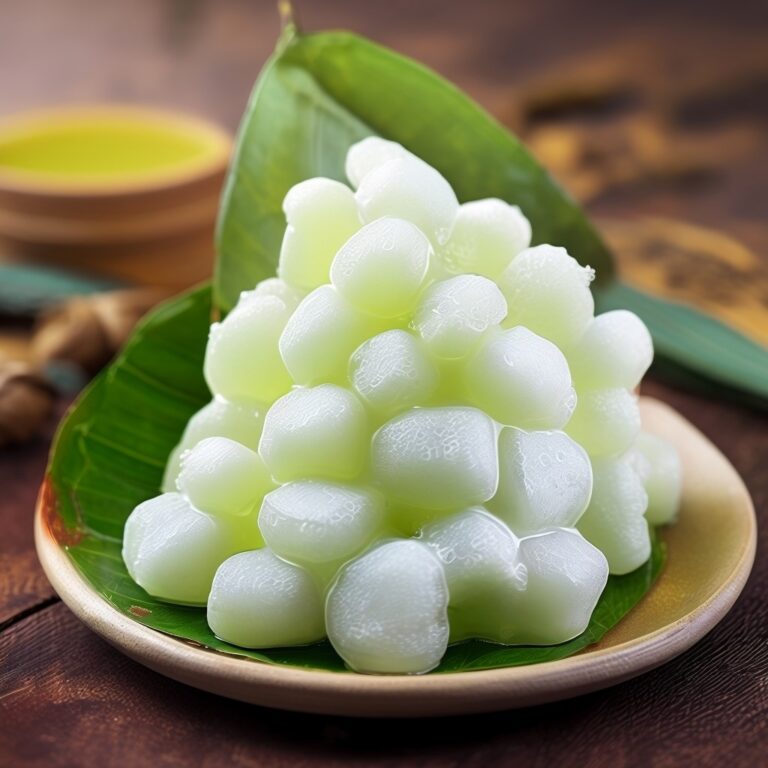Is matcha latte really healthy?
Table of Contents
| Sr# | Headings |
|---|---|
| 1 | Introduction |
| 2 | What is Matcha? |
| 3 | Nutritional Breakdown of Matcha |
| 4 | Health Benefits of Matcha Latte |
| 5 | Potential Risks and Considerations |
| 6 | How to Make a Healthy Matcha Latte |
| 7 | Comparing Matcha Latte to Other Beverages |
| 8 | Conclusion |
| 9 | FAQs |
Introduction
Matcha lattes have taken the world by storm, finding their way into trendy cafés and social media feeds everywhere. But as delicious as they may be, a common question arises: is matcha latte really healthy? This article dives deep into the nuances of matcha lattes, exploring not just the health claims, but also the potential downsides. As more people seek healthier alternatives to their morning coffee, matcha has emerged as a popular choice. But is it all it’s cracked up to be? Together, we’ll uncover the facts, myths, and everything in between about this vibrant green drink.
What is Matcha?
Matcha is a finely ground powder made from specially grown green tea leaves. The tea plants are shade-grown for about three weeks before harvest, which enhances their flavor and boosts the chlorophyll content, giving matcha its vibrant green hue. This meticulous process is what sets matcha apart from regular green tea.
When you drink matcha, you consume the entire leaf, providing a rich source of nutrients. Think of it like eating a whole fruit rather than just drinking its juice; you’re getting all the good stuff packed into the leaves. This unique preparation not only preserves the flavor but also maximizes the health benefits.
In Japan, matcha has a long history and is traditionally used in tea ceremonies. Today, matcha is enjoyed globally, often prepared as a latte, where it’s blended with milk (or milk alternatives) to create a creamy beverage. This modern twist has made matcha accessible to more people, but it raises questions about how these preparations affect its health benefits.
Nutritional Breakdown of Matcha
When you sip on a matcha latte, you’re not just indulging in a tasty drink; you’re also consuming a host of nutrients. Let’s break down what’s in matcha:
- Calories: A typical serving of matcha (about 1 gram of powder) contains roughly 3 calories.
- Protein: Matcha has around 0.3 grams of protein.
- Fat: It contains negligible fat.
- Carbohydrates: A serving typically has about 0.4 grams of carbohydrates.
- Fiber: You’ll find approximately 0.1 grams of fiber.
- Vitamins and Minerals: Matcha is rich in vitamins A, C, E, K, and several B vitamins. It also contains essential minerals such as potassium, calcium, and iron.
The real star of matcha, however, is its high concentration of antioxidants, especially catechins. One specific type of catechin, epigallocatechin gallate (EGCG), is believed to be responsible for many of matcha’s health benefits. In fact, matcha can contain up to 137 times more EGCG than regular green tea, making it a powerhouse of nutrition.
Imagine antioxidants as tiny warriors fighting off harmful free radicals in your body, helping to prevent cellular damage and reduce the risk of chronic diseases. By enjoying a matcha latte, you’re equipping your body with a strong defense system simply by savoring a delightful beverage.
Health Benefits of Matcha Latte
Antioxidant Powerhouse

As previously mentioned, matcha is packed with antioxidants, which play a crucial role in protecting your body from oxidative stress. This stress occurs when free radicals outnumber antioxidants, leading to cellular damage and increased risk of chronic diseases like heart disease and cancer. By consuming matcha, you’re essentially adding a protective shield to your health.
Boosts Metabolism and Aids Weight Loss
If you’re looking for a drink that can give your metabolism a little boost, matcha might be your new best friend. Research suggests that the combination of caffeine and catechins in matcha can increase your metabolic rate, helping you burn more calories throughout the day. However, it’s important to note that matcha is not a magic solution for weight loss. It works best in conjunction with a balanced diet and regular exercise.
Imagine your metabolism as a campfire; matcha can be seen as the kindling that gets it going. While it may not sustain the fire alone, it can certainly help ignite the flames of your weight management journey.
Enhances Mental Clarity and Focus
One of the most celebrated benefits of matcha is its ability to promote mental clarity. This is largely due to its L-theanine content, an amino acid that works in tandem with caffeine to provide a calm, focused energy without the jitters often associated with coffee. You might think of L-theanine as a soothing blanket, wrapping you in comfort while keeping your mind alert. This makes matcha a popular choice for those needing to concentrate, whether it’s studying for an exam or tackling a big project at work.
Supports Heart Health
Another compelling reason to consider adding matcha lattes to your diet is their potential benefits for heart health. Studies suggest that the antioxidants in matcha can help lower cholesterol levels and reduce blood pressure, contributing to overall cardiovascular health. By drinking matcha, you might be taking a small but meaningful step toward a healthier heart.
Potential Risks and Considerations
Caffeine Sensitivity
While matcha does contain caffeine, it’s important to be mindful of how much you consume. For those sensitive to caffeine, even the moderate levels found in matcha could lead to side effects like jitteriness, anxiety, or insomnia. It’s all about finding the right balance for your body.
Heavy Metal Contamination
Another consideration is the potential for heavy metal contamination in matcha. Since tea plants can absorb toxins from the soil, it’s crucial to choose high-quality matcha from reputable sources. Look for brands that conduct thorough testing for contaminants to ensure you’re getting a safe product.
Added Sugars and Calories
When preparing a matcha latte, the choice of milk and any added sweeteners can significantly alter the nutritional profile. While matcha itself is low in calories, adding sugar or high-calorie milk alternatives can turn a healthy drink into a calorie bomb. Opting for unsweetened plant-based milks or keeping sugar to a minimum can help maintain the health benefits of your matcha latte.
Potential Digestive Issues
Some individuals may experience digestive issues after consuming matcha, especially if they’re not accustomed to high-fiber foods. It’s advisable to start with small amounts and monitor how your body responds. If you experience discomfort, consider reducing your intake or speaking with a healthcare professional.
How to Make a Healthy Matcha Latte
Choosing Your Ingredients

To create a healthy matcha latte, start with high-quality matcha powder. Look for brands that are organic and have been tested for contaminants. Next, choose a milk alternative that aligns with your dietary preferences, whether it’s almond, oat, or soy milk. Unsweetened options are usually the best choice to keep added sugars in check.
Preparing the Matcha
Begin by sifting 1-2 teaspoons of matcha powder into a bowl to remove any clumps. Then, add a small amount of hot (not boiling) water—around 2 ounces—and whisk vigorously with a bamboo whisk or a milk frother until it’s frothy and smooth. This step ensures that the matcha dissolves properly and enhances the overall flavor.
Combining with Milk
In a separate saucepan, heat your chosen milk until it’s warm but not boiling. You can also froth the milk using a frother or blender for a creamier texture. Once heated, combine the milk with the whisked matcha, stirring gently to blend.
Sweetening Your Latte
If you prefer a sweeter taste, consider natural sweeteners like honey, agave syrup, or stevia. Just a small amount can elevate the flavor without adding too many extra calories. Taste your latte and adjust the sweetness to your liking.
Enjoying Your Latte
Serve your matcha latte in a mug or glass, and enjoy it warm or iced. This drink is not only delicious but can also be a delightful part of your morning routine or an afternoon pick-me-up.
Comparing Matcha Latte to Other Beverages
When it comes to choosing a beverage, how does a matcha latte stack up against other popular options? Let’s explore some comparisons.
Matcha Latte vs. Coffee
While coffee provides a quick caffeine boost, matcha offers a more gradual release of energy thanks to its L-theanine content. This means you’re less likely to experience the post-caffeine crash that can come with coffee. Plus, matcha’s antioxidant content far exceeds that of coffee, making it a nutrient-dense choice.
Matcha Latte vs. Regular Green Tea
Although regular green tea is healthy, matcha takes it up a notch. Since matcha involves consuming the whole leaf, it delivers more antioxidants, vitamins, and minerals than steeped green tea. If you’re looking for maximum health benefits, matcha is the way to go.
Matcha Latte vs. Sugary Beverages

In contrast to sugary drinks like sodas and flavored coffees, a matcha latte is a far healthier option. While sugary drinks can lead to weight gain and various health issues, matcha lattes provide nutrients and health benefits without the excessive sugars and empty calories.
Conclusion
In conclusion, matcha lattes can be a healthy addition to your diet, offering numerous benefits such as antioxidant power, enhanced focus, and potential heart health support. However, it’s essential to be mindful of factors like caffeine sensitivity, ingredient choices, and quality to fully enjoy what matcha has to offer. If you’re searching for a delicious, nutritious beverage to elevate your health routine, a well-prepared matcha latte might just be the perfect fit.
FAQs
What are the main health benefits of matcha lattes?
Matcha lattes offer antioxidants, boost metabolism, enhance mental clarity, and may support heart health.
Can matcha lattes help with weight loss?
Yes, matcha can boost metabolism, but it should be combined with a balanced diet and exercise for effective weight loss.
Is matcha latte suitable for everyone?
While many can enjoy matcha lattes, those sensitive to caffeine should monitor their intake, and it’s essential to choose high-quality matcha.
How can I make my matcha latte healthier?
Use unsweetened plant-based milk, limit added sugars, and opt for high-quality matcha powder.
Are there any risks associated with consuming matcha?
Potential risks include caffeine sensitivity, heavy metal contamination, digestive issues, and added sugars in prepared drinks.







